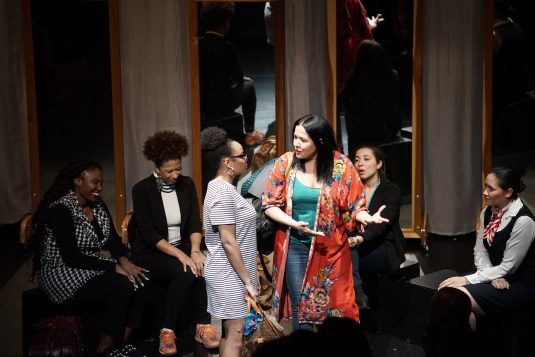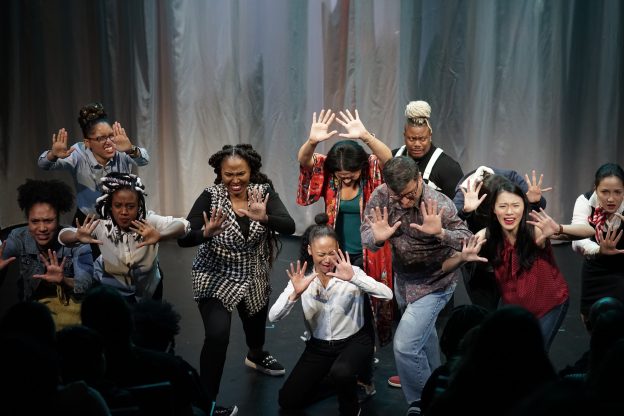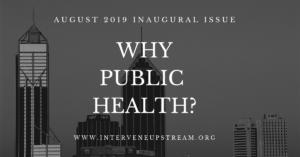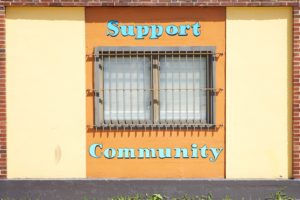ACT I: An Introduction to Theater in Public Health
I remember my first big role as the Tree in a live adaptation of The Giving Tree by Shel Silverstein. I was upset being cast as a tree stump, but I was so drawn to the story we were telling. We transformed our bodies to explore love, selfishness and relationships, and we told a story that many people could identify with.
I fell in love with theater that day.
That production changed the way I experience life. I learned that the human experience is both beautiful and fascinating. Even more, I was struck by our ability to invite others to feel and reflect on a variety of issues and emotions. For me, playing the Tree taught me it is just as important to set boundaries as it is to love and give.
As I transitioned into a career in health education, I wanted to explore ways to further engage communities. I wanted communities to have space to learn freely and creatively. Theater allows us the opportunity to work collaboratively to identify key issues and creatively explore ways to improve individual and community health. Although when witnessed, theater can be a passive activity. However, engaging in the art form can spark empathy, which in turn can positively impact policy and behavior change. When a person is in-role, they can explore their ideal self, practice a positive behavior, identify negative behaviors and/or communicate a message in an impactful way.
With this, I focused my efforts into developing and producing an applied/community-engaged theater approach to health education and coaching. By engaging my interests, I hope that public health, health education professionals and students may begin developing an arts-based pedagogical approach to community health.
ACT II: The Evidence Behind Arts-Based Education
Learning through the arts is a widely accepted pedagogical approach in education. Constructivist theory provides a basis for arts-based pedagogy. Rieger et. al (2015) note that “constructivist educators assert that meaning is constructed through engagement with the world, experiential learning activities and social interactions.”1 If knowledge is viewed as socially constructed, then innovative ways to engage students, promote dialogue, enhance participation and facilitate reflection are needed. 2. Thus, arts-based inquiry posits the ability to fully engage learners (i.e. community members) in making meaning of new knowledge and ideas.
In her book, Why Our Schools Needs the Arts, author Jessica Davis argues that there are ten specific learning outcomes that occur because of the unique features of the arts including: producing a tangible product resulting in imagination and agency, focus on emotion resulting in expression and empathy, privilege ambiguity resulting in interpretation and respect, embracing a process orientation resulting in inquiry and reflection and facilitating connection resulting in engagement and responsibility.3 Many of these learning outcomes are important in public health education and thus highlight that the arts is a good avenue for education.
Additionally, theater allows practitioners the ability to practice generating behavior or policy change. As an example, Nobel Peace Prize nominee Augusto Boal was a Brazilian theater practitioner, drama theorist and political activist. He founded The Theatre of the Oppressed, which emphasizes the use of theater to promote social and political change. In The Theatre of the Oppressed, Boal overthrows the traditional relationship between actors on stage and spectators in the seats. His concept makes audience become active participants, allowing them to explore, analyze and work. This ultimately would help forge the mindset that the audience can transform reality, even outside of the theater. In his book, Boal writes, “theatre, or theatricality, is the capacity, this human property which allows man to observe himself in action, in activity. Man can see himself in the act of seeing, in the act of acting, in the act of feeling, the act of thinking. Feel himself feeling, think himself thinking.”4
This is the theoretical basis of my work. As Dr. Elizabeth Mbizvo states in her essay in The Lancet, “Theater has proven to be an effective and entertaining strategy for dissemination of health information and reinforcement of positive health messages. Theater can overcome literacy barriers through use of local experience and vernacular to provoke emotional and analytical responses in the audience.”5 Incorporating the arts into public health is effective and engaging, and I had the power and passion to bring it to the community.

ACT III: My Journey as a Health Educator
My career in health education has exposed me to a variety of techniques to incorporate into my work, which will help bolster the programs I create in the future. Along the way, I’ve learned and grown in the process.
My professional exposure to theater making change began in 2011, when I was training at New Freedom Theatre in Philadelphia, PA. The company had recently developed an original production called Journey of a Gun, a story that begins with a straw purchase of a gun, which then moves through several hands and several crimes. The show had a peer education component as all the actors were children and teens. As the production performed at different schools across Philadelphia, I was interested in the play’s ability to engage young people in a candid conversation about gun violence. Seeing this, I decided to further progress the idea of post-show talkbacks and passive witnessing in my own work. Thus, I hope to curate interactive theater experiences that meet at the intersection of artistic exploration and health behavior change. I want to work to engage communities in theatrical experiences that plant the seeds for a paradigm shift in which communities can explore how best to advocate for their health and practice health behaviors unique to their needs.
As a health educator, before developing any intervention or program, I first assess the needs of a community, a skill I developed as an academic advisor. In my role, I noticed that many of my students had limited knowledge of the resources they had access to. More so, I realized that many of my students struggling with accessing their own wants and needs in a healthy and constructive way. Seeing this gap, I decided to develop a series of workshops for undergraduate students that utilizes motivational interviewing, health coaching and theater techniques to assist students in goal setting and making informed choices for collegiate success. The project’s current goals are to assist participants in fostering a positive and collaborative culture in line with their active participation on campus and introduce and assess understandings of stress and behavioral management techniques. I use several techniques like image theater, forum theater, devising exercises and health coaching to achieve these goals.
For example, these interactive theater exercises may explore a group goal, say reducing substance use to improve class performance. For this purpose, I would create a scenario that explores substance use and ask participants to create short scenes to explore problems and potential solutions. Each group would have multiple opportunities to perform their scene. I could ask the audience to reflect on the following questions: What could characters do differently? What barriers or helpers did we see? What other techniques could be used? I once had students explore positive body image. They created a striking image of breaking a mirror all on their own, and we debriefed the exercise by discussing what the image meant and what we could take away from it. This was such a beautiful moment in the facilitation. The beauty of this work is that anything is possible!
I was a co-creator and researcher in the New York University (NYU) Drama Therapy: Theatre & Health Lab’s production Turbulence, part of the As Performance series. The show explored the experiences of Black and People of Color (BPOC) clinicians, students and creatives in clinical settings and the larger world. Led by drama therapist Britton Williams, we were able to stage a provocative and participatory performance after a nine-month process that challenged societal narratives about race and culture. Engaging in a participatory-action research process, we were able to find that the need for community was a critical condition in supporting the movement of BPOC Creative Arts Therapists and Creatives. As a Black woman, this production was paramount in changing the way I incorporate diversity and inclusion in a process.
Most recently, I was inspired by a recent study abroad experience in Ireland to create programs for small children in preschool, kindergarten and the first grade. I learned how to create fun and meaningful experiences from amazing Irish children’s theater practitioners. With that , I’m currently in the process of developing the title We’re Having a Party! that invites children onto the stage. In We’re Having a Party!, youth discover what it means to make healthy lifestyle choices as they help characters prepare for a party in an immersive and interactive theater experience. Children will be asked to help plan the best party of the century while exploring topics like choosing healthy foods, physical activity, hygiene and safety. As part of my activity, children have the option to go grocery shopping for the party and actively make healthy food choices. I am excited to develop this project further and eventually fully produce and execute it!

The Encore: An Invitation for You to Bring Magic into Life
I am an artist and educator that believes the communities I work with are the experts on what they need. Everyone is capable of finding meaning through art, and I want to help communities navigate that newfound meaning. As such, I frame every activity – every encounter around a community’s needs. I leave space for creative exploration in the moment, never allowing the plan to spoil the process. I hope each community I work with can begin thinking of answers to the question: What does health mean to me?
I recognize that as public health leaders, our facilitation and education styles are not the same. However, I hope that after reading about my projects and interest in the field, you are more inspired enough to do your own research and expand the tools you use. In work that is so heavily reliant on the idea of collaborating with communities, it is important to explore a breadth of styles to see what might fit a specific community the best. In my own experience, art (specifically theater-making) and public health is engaging, accessible and collaborative. If facilitated well, it allows for unique knowledge dissemination and data gathering. I implore you to give art a chance in your practice: Ask questions, partner with your artistic colleagues, learn new facilitation skills and see the magic of the arts come to life.
- **https://doi.org/10.11124/jbisrir-2015-1891** [↩]
- **10.11124/jbisrir-2015-1891** [↩]
- JH, Davis. (2008). Why our schools need the arts. New York: Teachers College Press. [↩]
- Boal, Augusto. (1995). The rainbow of desire: The boal method of theatre and therapy (Adrian Jackson, Trans.). New York, NY: Routledge. [↩]
- **https://doi.org/10.1016/S0140-6736(06)69917-0** [↩]





Pingback: Introducing Intervene Upstream: 2019 Inaugural Release » Intervene Upstream, the online peer-reviewed public health publication for graduate students